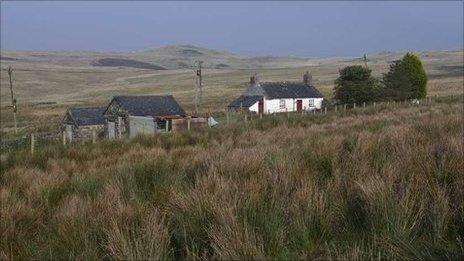History uncovered by Wales' Uplands Archaeology Initiative
- Published
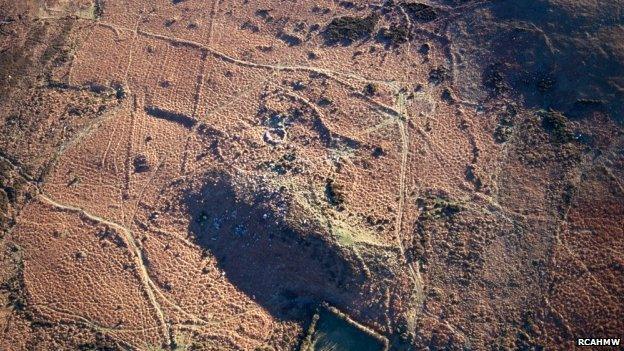
Prehistoric landscape at Pembrokeshire's Preseli Mountains shows ancient field walls
Prehistoric sites are among the latest discoveries in the final part of a 28-year study of Wales' countryside.
The finds around Trawsfynydd, Gwynedd, mark the end of a project to survey moorland left "unimproved" over the years to find unrecorded sites.
Over 42,000 archaeological features have been recorded in the Uplands Archaeology Initiative, external since 1987.
Experts say the findings will give a richer understanding of the importance upland areas have played in the past.
The Royal Commission on the Ancient and Historical Monuments of Wales (RCAHMW) has been collating the data from the fieldwork carried out by different organisations.
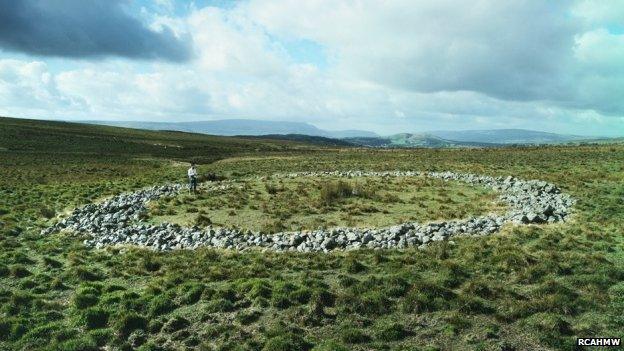
A Bronze Age ring cairn at Cwm Cadlan at Penderyn, Merthyr Tydfil
The latest findings around Craig Aberserw in Snowdonia have been made by Peter Schofield and Hannah Leighton from Oxford Archaeology North (OAN).
They have recorded 4,500 sites and monuments since OAN's work on the project began in 2002.
Mr Schofield said a recent finding of a Prehistoric burnt mound - a site showing fire-cracked stones, possibly used for heating water - close to a popular path used by walkers on Snowdon, was a "stand out feature".
He said it also showed that there were lots of things still to be discovered as it had only recently been identified despite the popularity of the area with visitors.
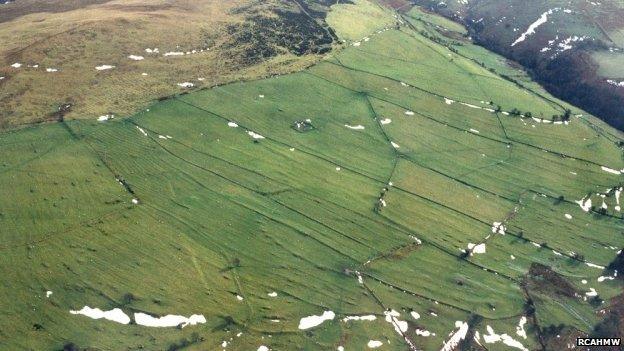
Medieval strip fields below Cefn Penagored, near Llandrillo, Denbighshire
His team's survey work has been looking at ancient structures, including abandoned settlements, burial monuments, old peat workings and sheepfolds, many of which were entirely unknown.
They have found evidence of more prehistoric burnt mounds as well as standing stones, possibly having ceremonial purposes or defining a route at Trawsfynydd.
Mr Schofield said they have also recorded a "hell of a lot of mining" over the centuries as well as a high number of medieval buildings and enclosures used for seasonal farming.
David Leighton, a senior investigator in RCAHMW's Reconnaissance Team, said the project had shown the extent and history of industrial exploitation in Wales, "often leading to spectacular features long abandoned."
He highlighted the landscape at the Blaenavon World Heritage Site, Torfaen, once a major producer of iron and coal in 19th Century south Wales.
Mr Leighton said: "The future analysis of nearly three decades of survey data should lead to a deeper and richer understanding of the part played by the uplands in the history and culture of Wales."
About 40% of Wales' landscape is regarded as uplands, an area over 244 metres (800ft) above sea level.
More information on findings can also be found on the Coflein, external website, a national collection of information about historic sites in Wales.
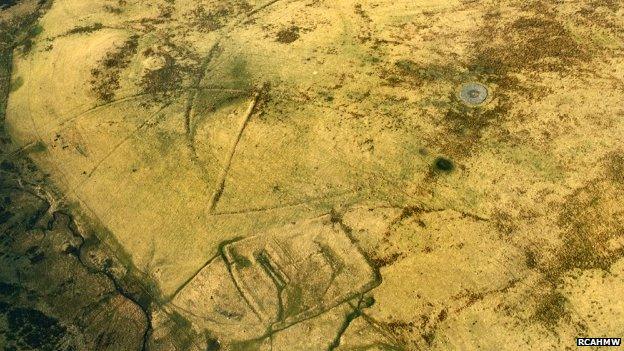
Medieval rectangular enclosure, possibly for sheep, and associated with a priory in Denbigh, Denbighshire
- Published2 October 2014
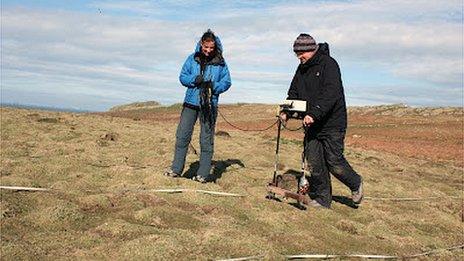
- Published31 March 2013
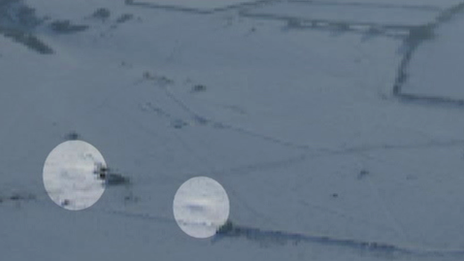
- Published29 May 2011
